Cyber attacks have been rated the fifth top rated risk in 2020 and become the new norm across public and private sectors. This risky industry continues to grow in 2022 as IoT cyber attacks alone are expected to double by 2025. Plus, the World Economic Forum’s 2020 Global Risk Report states that the rate of detection (or prosecution) is as low as 0.05 percent in the U.S.
If you are one of the many that run a growing startup, you know the landscape is ever changing and 2020 brought on several changes, to say the least. The pandemic affected all types of businesses — big and small. If anything, the pandemic amplified cybercrime due to the uncertainty around remote working and how to protect your business.
Cybercrime, which includes everything from theft or embezzlement to data hacking and destruction, is up 600% as a result of the COVID-19 pandemic. Nearly every industry has had to embrace new solutions and it forced companies to adapt, quickly.
How can you prepare your startup for data security in 2022 and beyond? In this guide, we dissect the most important cybersecurity statistics, facts, figures, and trends as they relate to your startup.
The average cost of a single ransomware attack is $1.85 million. Get a free quote to learn how much a cyber insurance policy could save you.
Costs of Cybercrime
Cybercrime will cost companies worldwide an estimated $10.5 trillion annually by 2025, up from $3 trillion in 2015. At a growth rate of 15 percent year over year — Cybersecurity Ventures also reports that cybercrime represents the greatest transfer of economic wealth in history.
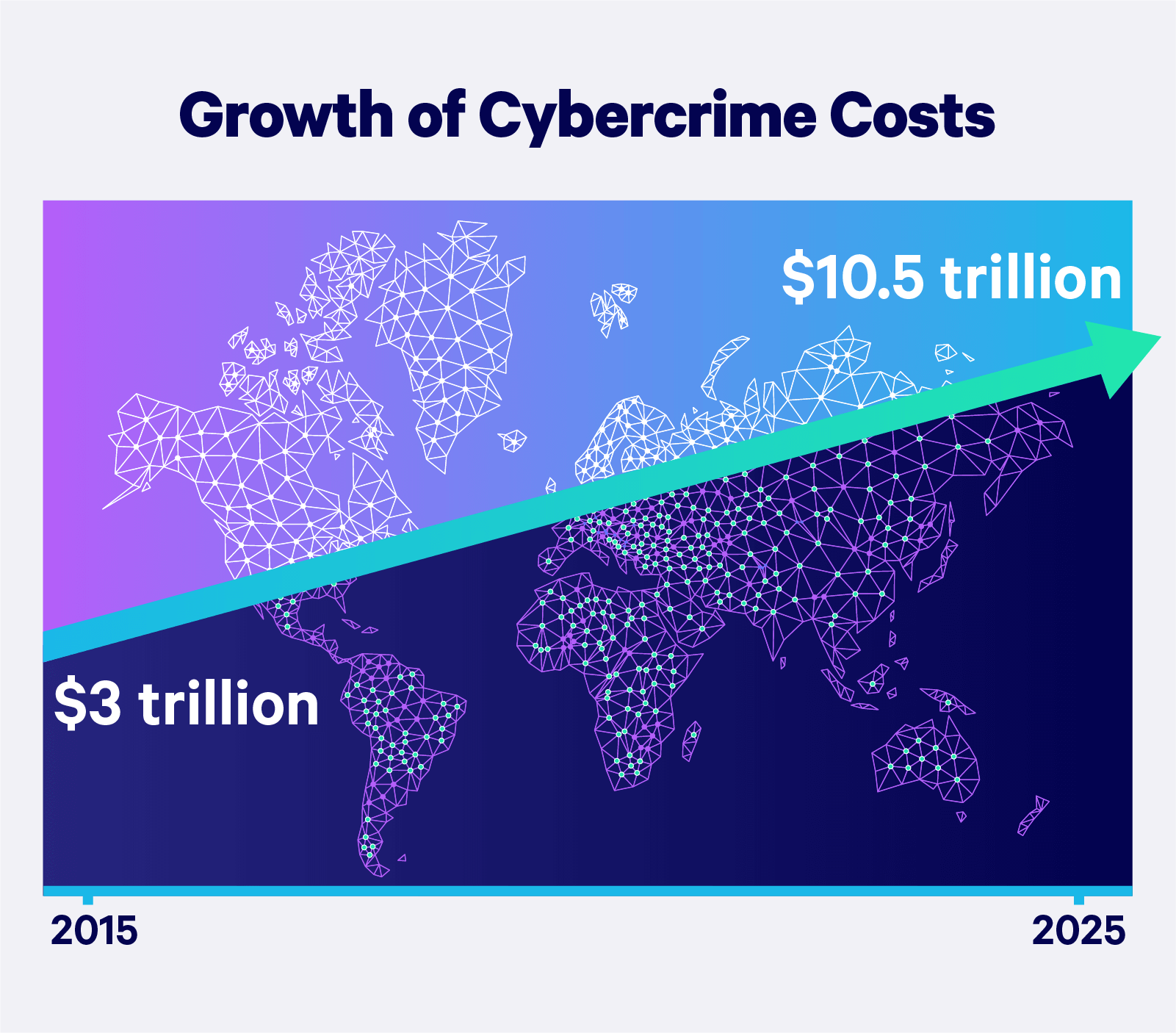
Cybercrime for Small and Medium Businesses
Cyber attacks on all businesses, but particularly small to medium sized businesses, are becoming more frequent, targeted, and complex. According to Accenture’s Cost of Cybercrime Study, 43% of cyber attacks are aimed at small businesses, but only 14% are prepared to defend themselves.
Not only does a cyber attack disrupt normal operations, but it may cause damage to important IT assets and infrastructure that can be impossible to recover from without the budget or resources to do so.
Small businesses struggling to defend themselves because of this. According to Ponemon Institute’s State of Cybersecurity Report, small to medium sized business around the globe report recent experiences with cyber attacks:
- Insufficient security measures: 45% say that their processes are ineffective at mitigating attacks.
- Frequency of attacks: 66% have experienced a cyber attack in the past 12 months.
- Background of attacks: 69% say that cyber attacks are becoming more targeted.
.
.
The most common types of attacks on small businesses include:
- Phishing/Social Engineering: 57%
- Compromised/Stolen Devices: 33%
- Credential Theft: 30%
By understanding the targets of attacks and consequences, as a business leader you can minimize the potential, gain value in your cybersecurity efforts, and even prevent future attacks.
Longtail Cost of Cyber Attacks
The long tail costs of a data breach can extend for months to years and include significant expenses that companies are not aware of or do not anticipate in their planning.
These costs include lost data, business disruption, revenue losses from system downtime, notification costs, or even damage to a brand’s reputation. In the visual below, we outline the impacts a business may face from the first year up to the third year.
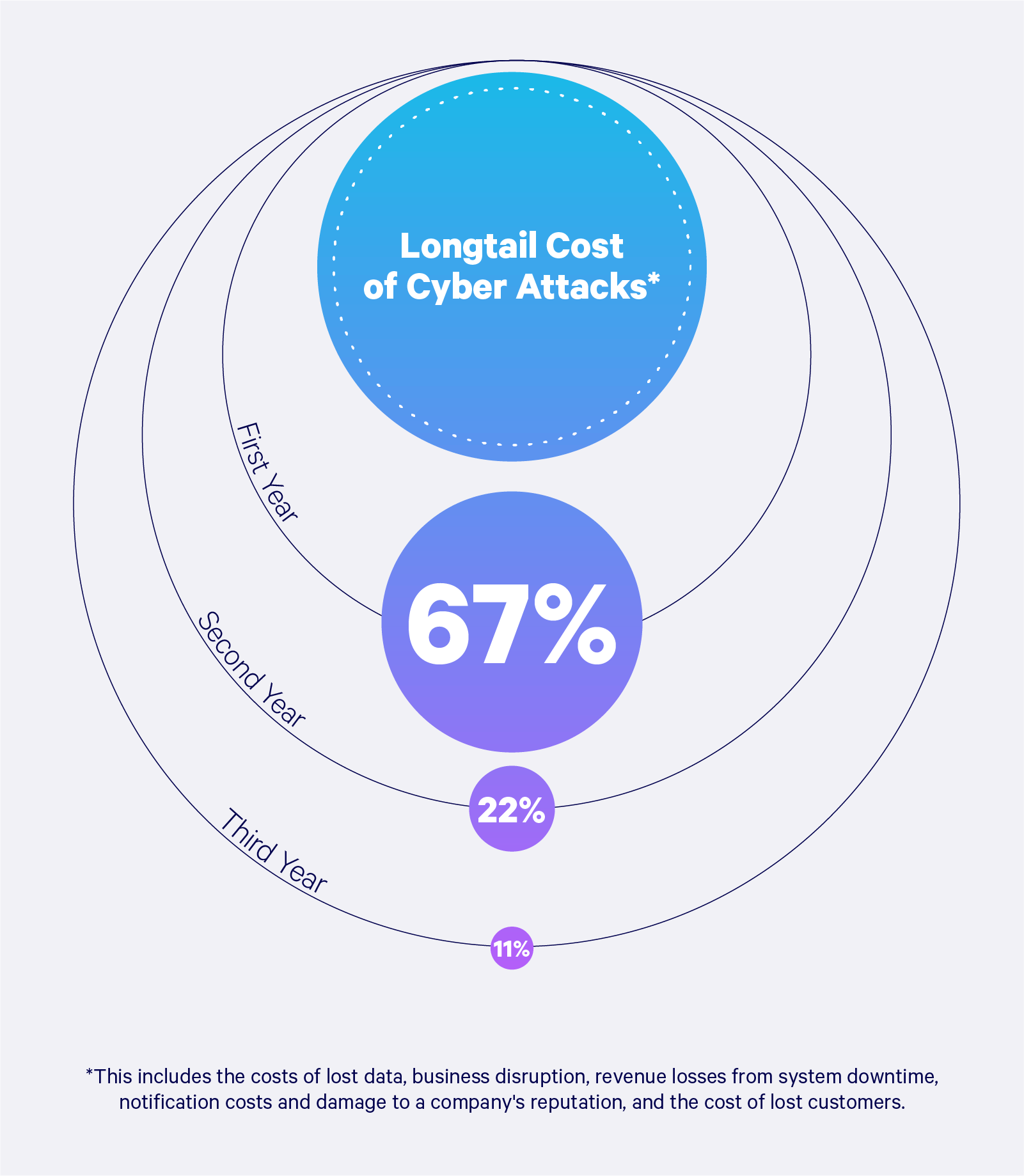
Impact and Severity of Cyber Attacks
Cyber attacks can impact an organization in many ways — from minor disruptions in operations to major financial losses. Regardless of the type of cyber attack, every consequence has some form of cost, whether monetary or otherwise.
Consequences of the cybersecurity incident may still impact your business weeks, if not months, later. Below are five areas where your business may suffer:
- Financial losses
- Loss of productivity
- Reputation damage
- Legal liability
- Business continuity problems
Ransomware attacks are becoming more prevalent as a concern. At the end of 2016, a business fell victim to a ransomware attack every 40 seconds. This is expected to rise to every 11 seconds by 2021, according to a report by Cybersecurity Ventures. This cyber attack occurs when malicious software is used to restrict access to a computer system or data, until the victim pays ransom requested by the criminal.
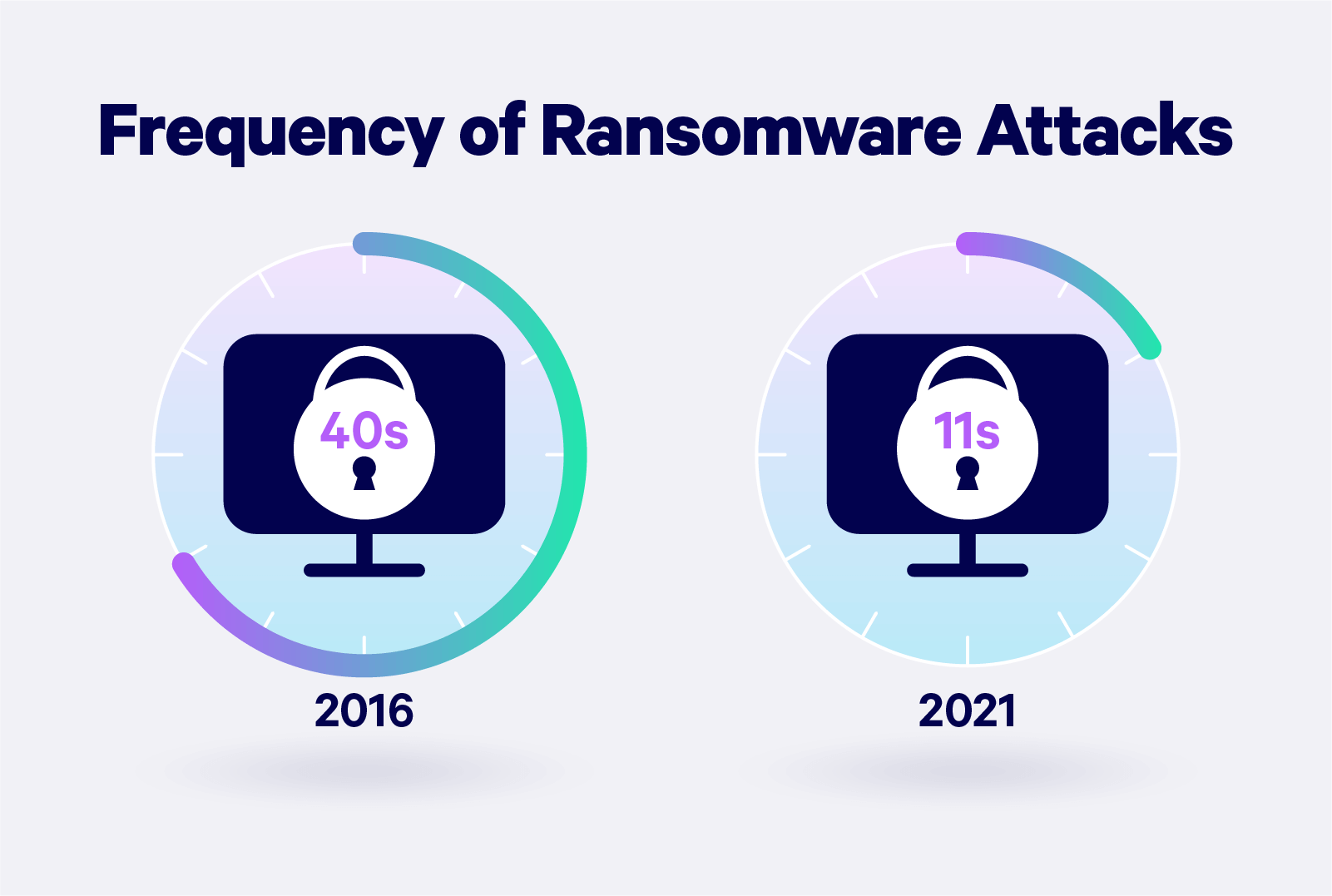
Cyber Attacks by Industry
Some industries are more vulnerable to cyber attacks than others, simply due to the nature of their business. While any industry could be subject to a data breach, those most at risk are businesses that are closely involved with people’s daily lives.
Companies that hold sensitive data or personally identifiable information are common targets for hackers. Types of businesses or organizations that are most vulnerable to cyber attacks include:
- Banks and financial institutions: Contain credit card information, bank account information, and personal customer or client data.
- Healthcare institutions: Repositories for health records, clinical research data, and patient records such as social security numbers, billing information, and insurance claims.
- Corporations: Has inclusive data such as product concepts, intellectual property, marketing strategies, client and employee databases, contract deals, client pitches, and more.
- Higher education: Hold information on enrollment data, academic research, financial records, and personally identifiable information like names, addresses, and billing info.
In the visual below, we break down common types of cyber incidents and the varying impacts on industries.

Breach Discovery
Breach discovery is when the company or business becomes aware that the incident occurred. According to IBM, it takes a company 197 days to discover the breach and up to 69 days to contain it.
Companies that contained a breach in less than 30 days saved more than $1 million
compared to those that took more than 30 days. A slow response to a data breach can cause even more trouble for your company. It can result in a loss of customer trust, productivity, or major fines.
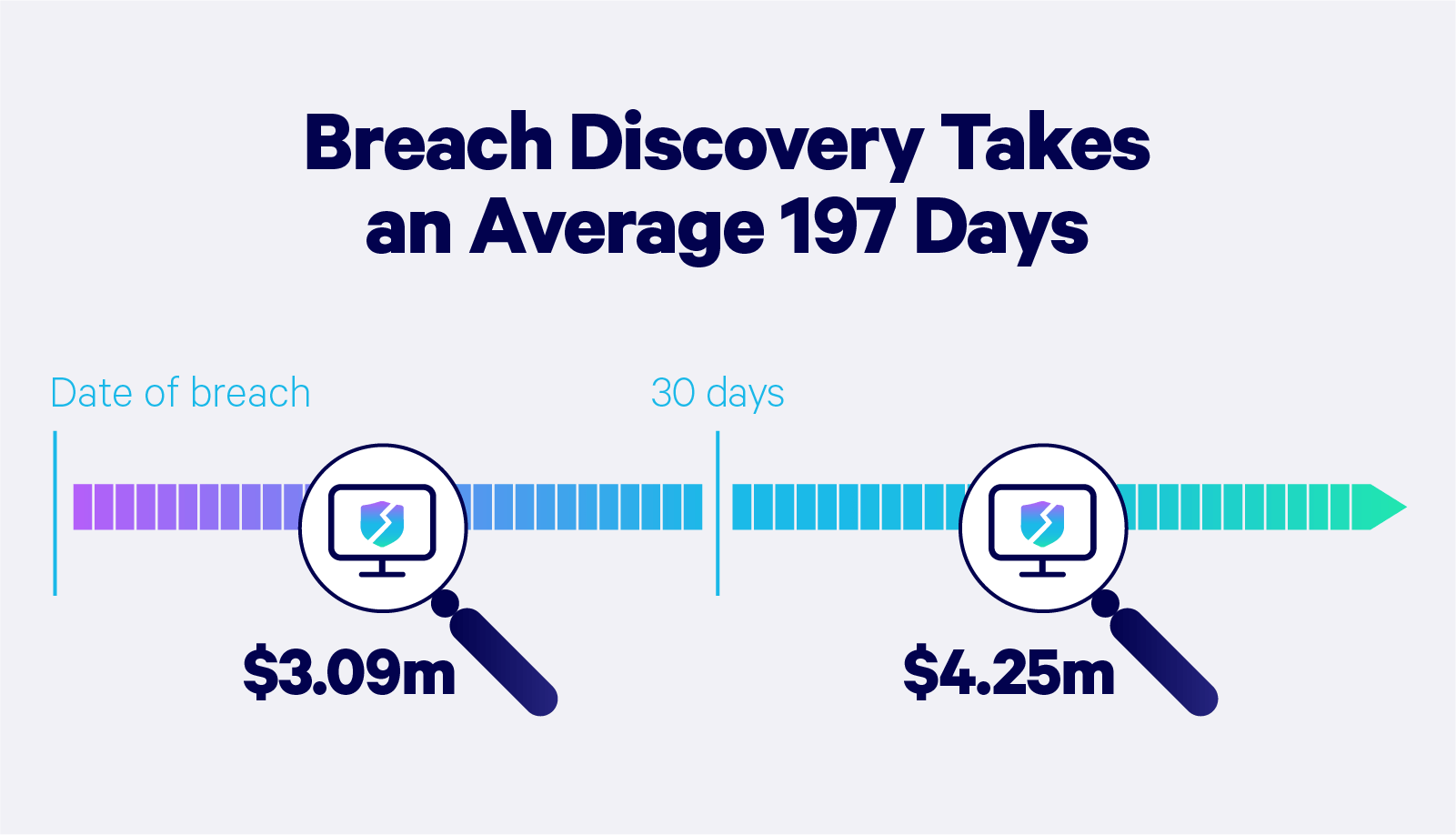
A data breach response plan is a proactive way to be prepared in the event that a breach does occur. Having a risk management strategy in place to combat incidents such as breaches can minimize the impact on your company and bottom line. An incident response plan, for example, provides guidance for your team during the phases of detection, containment, investigation, remediation, and recovery.
Information Security Spending
Global spending on cybersecurity products and services is predicted to exceed $1 trillion cumulatively over the five-year period from 2017 to 2021. This is a 12-15% year-over-year cybersecurity market growth from 2021.
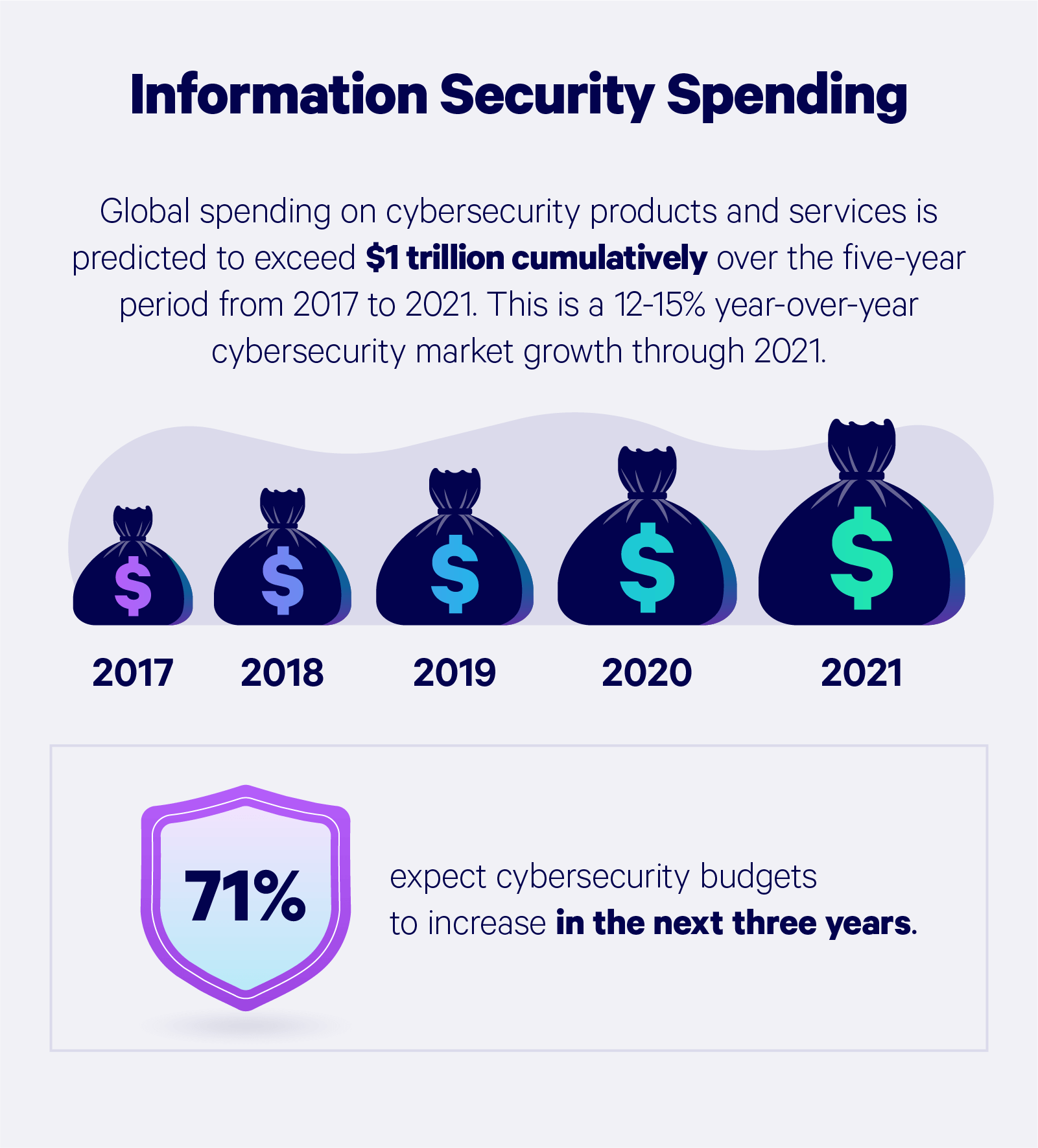
Global Security Spending
Let’s take a look at how cybersecurity spending has grown around the globe — broken down by product or service.
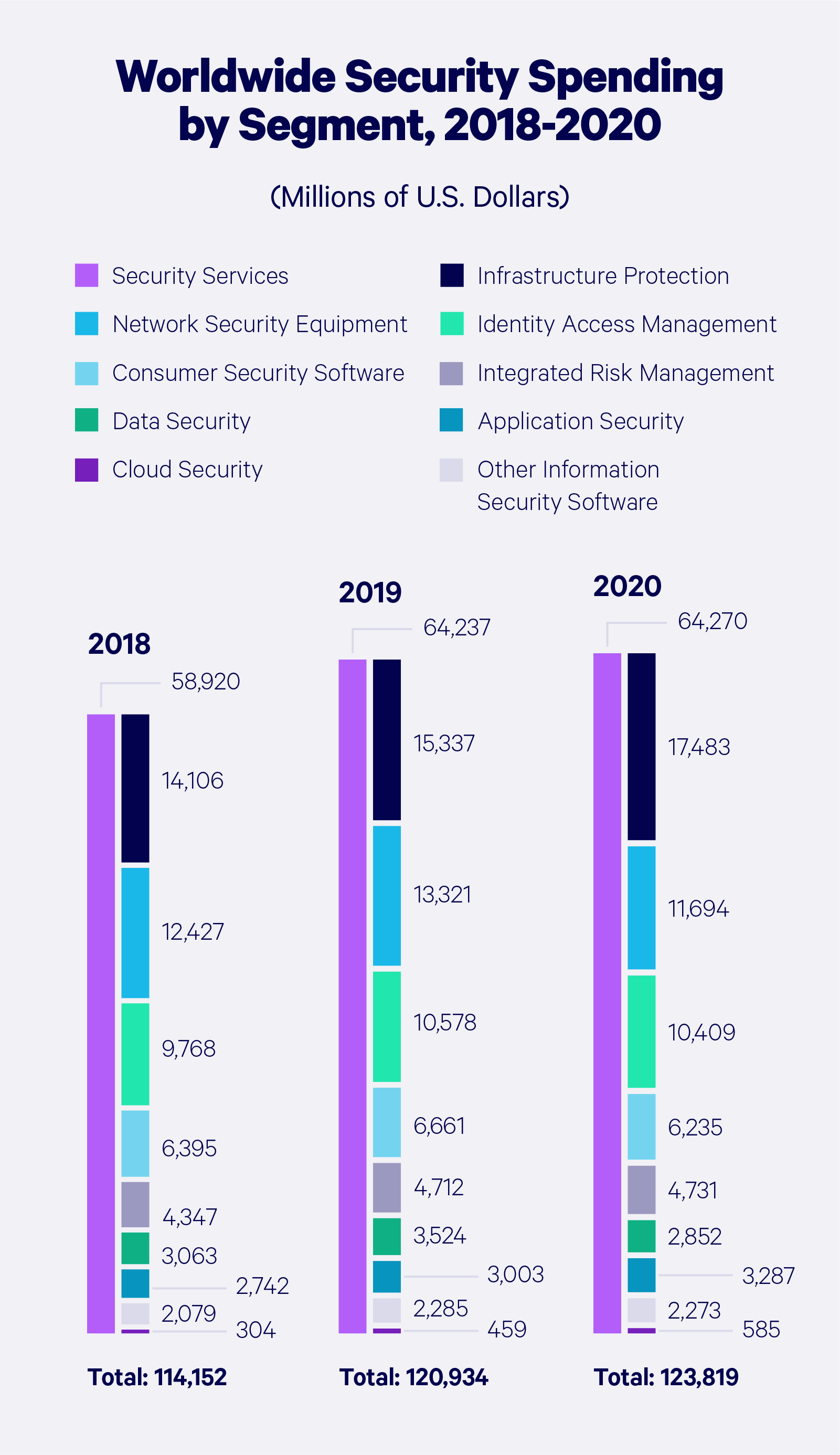
Who’s Behind Data Breaches?
The average person might assume the files on a company database are a bunch of boring documents, but hackers know the hard truth about that hard drive.
According to Verizon’s Data Breach Investigations Report, the majority of cyber attacks are triggered by outsiders, insiders, company partners, organized crime groups, and affiliated groups. We break down the percentages of each:
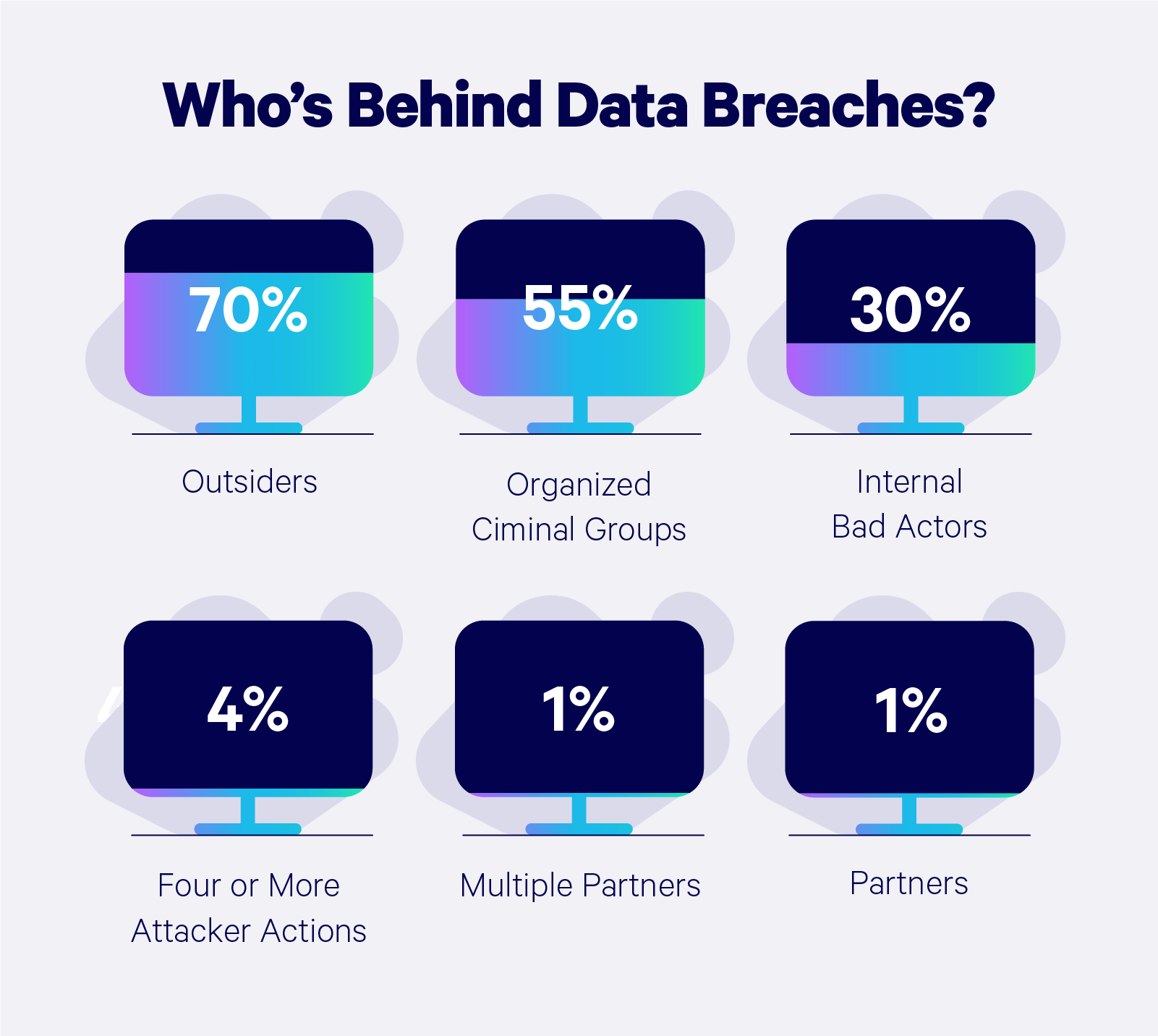
How to Reduce the Risk of Cyber Attacks
With the increasing threats of hackers mishandling your data, implementing processes to prevent data security breaches is the most responsible course of action after having adequate professional data breach insurance.
Data breach laws vary by state, so depending on where your business is located, there are different factors to take into consideration. Notifications around the breach, what’s covered, and penalties will look different depending on the incidence and state you’re located in.

1. Reduce Data Transfers
Transferring data between business and personal devices is often inevitable as a result of the increasing amount of employees who work remotely. Keeping sensitive data on personal devices significantly increases vulnerability to cyber attacks.
2. Download Carefully
Downloading files from unverified sources can expose your systems and devices to security risks. It’s important to only download files from sources and avoid unnecessary downloads to lower your device susceptibility from malware.
3. Improve Password Security
Password strength is the first line of defense against a variety of attacks. Using strings of symbols that don’t have a meaning, regular password changes and never writing them down or sharing them is a crucial step to protecting your sensitive data.
4. Update Device Software
Software providers work hard on continuously making their software more secure, and regularly installing the latest updates will make your devices less vulnerable to attacks.
5. Monitor for Data Leaks
Regularly monitoring your data and identifying existing leaks will help mitigate the potential fallout from long-term data leakage. Data breach monitoring tools actively monitor and alert you of suspicious activity.
6. Develop a Breach Response Plan
Data breaches can happen to even the most careful and disciplined companies. Establishing a formal plan to manage potential data breach incidents, primary cyber attack response plan, and cyber attack recovery plan will help organizations of any size respond to actual attacks and contain their potential damage.
It’s clear that businesses are under a constant threat of cybercrime and must take steps to defend their data. Don’t wait until it’s too late, take steps today to prevent future data breaches and the consequences that follow. Akin to the need for having adequate cyber liability insurance, having adequate data protection is essential.
.
October 4, 2022 Published by The Embroker.







